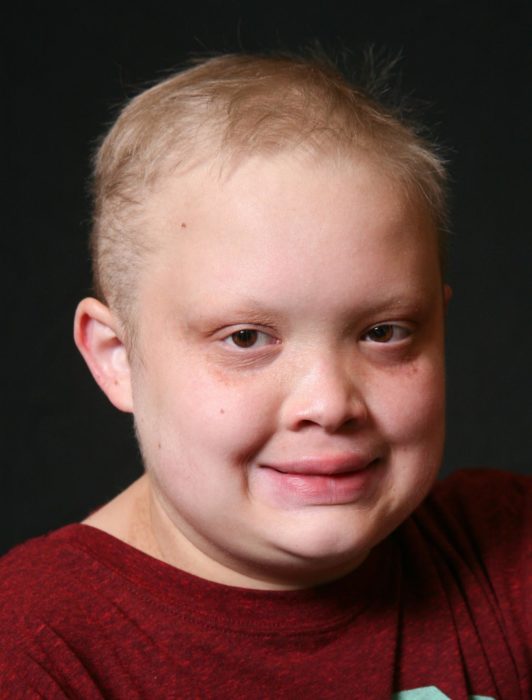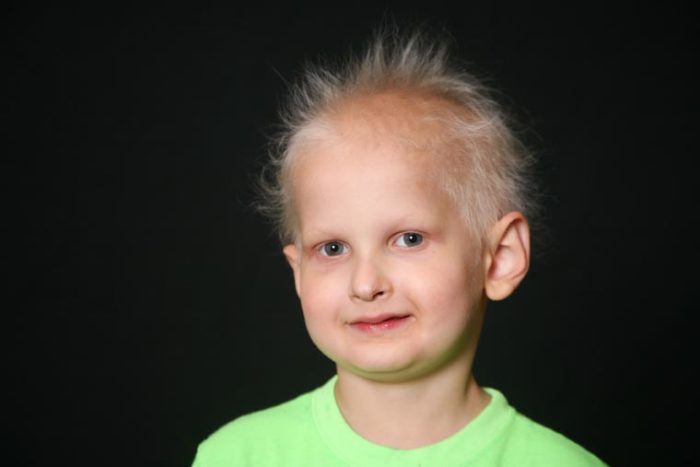Synonyms
- Anhidrotic ectodermal dysplasia
- Christ-Siemens-Touraine syndrome
Forms
- X-linked hypohidrotic ectodermal dysplasia (XLHED)
- Autosomal recessive hypohidrotic ectodermal dysplasia (ARHED)
- Autosomal dominant hypohidrotic ectodermal dysplasia (ADHED)
Hypohidrotic Ectodermal Dysplasia (HED) is a Rare Genetic Condition Characterized by
- a reduced ability to sweat (hypohidrosis)
- missing teeth, (hypodontia) and
- fine sparse hair (hypotrichosis).
Individuals Affected by HED Share a Similar Facial Appearance
- Thin, dark skin beneath the eye with extra folds or wrinkles,
- A depressed “saddle” nose,
- Small narrow jaw, and
- Small pointed teeth. Eruption of the teeth may be delayed, or only a few teeth may erupt.
Additional Features Can Include
- Decrease in mucous glands in the throat, voice box, windpipe, nose and tube to the lungs
- Dry and scaly skin (eczema)
- Dry eyes
- Asthma
- Ear wax impaction
- Dry nasal concretions
- Respiratory illness
- Sinusitis
- Sparseness of saliva.
Nails, facial hair in males, and the appearance of pubic hair in adolescence are normal.
With the exception of heat intolerance, general health and overall development, including intelligence, is within normal limits.









How is HED Diagnosed?
Often, a physician can diagnose HED after infancy on the basis of physical features.
Symptoms to look for in newborns:
- Dark circles around their eyes because that skin is thin and the underlying blood vessels create a bluish shadow.
- Peeling skin
- Intolerance to heat, and may be irritable in warm environments or may have unexplained fevers.
More often, diagnosis is not made until the teeth do not erupt at the expected age or the teeth appear to be pointed when they do erupt.
What Causes HED?
Changes or mutations in the EDA, EDAR, EDARADD, and WNT10A genes are most commonly associated with HED. These genes tell the body to make proteins that are needed early in life (before birth and shortly after) for the normal development of sweat glands, teeth, hair, skin, and other mucous glands. A parent may pass the gene to a child. Or, the gene can change in a child without either parent having the gene.
Is There a Test for HED?
- Molecular genetic testing, which is available for all three types of HED.
- Carrier testing is possible for XLHED, if the syndrome-causing mutation in the family is known.
- Prenatal testing is possible for pregnancies at increased risk for XLHED.
How is HED Inherited?
HED may be inherited in one of three patterns:
- X-linked recessive,
- Autosomal recessive, and
- Autosomal dominant.
Ninety-five percent of randomly selected individuals with HED have the X-linked recessive form. The remaining 5% have either the autosomal recessive or autosomal dominant form of HED. The mode of inheritance may be determined in some instances by family history and in others by molecular genetic testing.
What are the signs and symptoms of hypohidrotic ectodermal dysplasia?
Hypohidrotic ectodermal dysplasia (HED) is a genetic condition that affects the skin, hair, teeth, nails, and sweat glands. Symptoms of HED may include missing and/or abnormally shaped teeth, sparse or absent hair, dry skin, decreased sweating, abnormal nails, and other issues such as frequent respiratory infections, eye problems, and hearing loss.
Additional Information
Download “A Guide to the First Year of Life: Hypohidrotic Ectodermal Dysplasia” to help you know what to expect for your newborn affected by HED.
Download Comprehensive HED GuideDownload this fact sheet, What Does HED Look Like?
Learn more about:
- X-Linked Hypohidrotic Ectodermal Dysplasia (XLHED)
- Autosomal Recessive Hypohidrotic Ectodermal Dysplasia (ARHED)
- Autosomal Dominant Hypohidrotic Ectodermal Dysplasia (ADHED)
- Why Women Need to Know If They Carry The Gene Variant for XLHED
- Why Genetic Testing is Critical in HED
Family Perspectives
- New Guide to Help With Ypur HED Baby’s First Year
- The Baby With XLHED Who Now Sweats
- The Power of a Mother’s Love
- Pushing the Limit: Running a Marathon Without Breaking a Sweat
- Listen to Leslie, Roy and Maverick talk about their experience with XLHED.
- When Your Child is Diagnosed with Failure to Thrive
- Finding Her Voice and Rediscovering Her Tribe
- I Wanna Ask Santa for Teeth
- No Human Is Limited
Featured Partner: EspeRare
Building on years of XLHED research studies, our partnership with EspeRare is working to develop a prenatal treatment for XLHED. If the EDELIFE clinical trial is successful and the treatment is approved, it could be the first step to correcting genetic conditions like ectodermal dysplasias before birth.
Read about XLHED Research